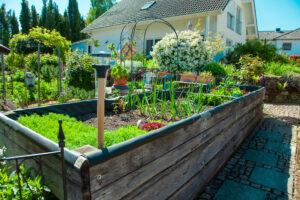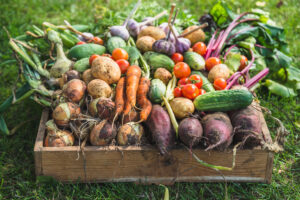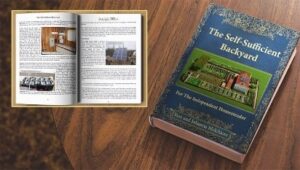Introduction: Zone 7 Fall Garden

The growing season for Zone 7 typically starts in late March and extends through to early November, giving gardeners a long window to cultivate and harvest a variety of crops. A Zone 7 fall garden is well-suited for a variety of fall vegetables, which can be planted as early as July for a harvest well into October.
Some popular choices include:
Cabbage, kale, spinach, and cilantro.
These vegetables can be harvested throughout the fall months to enjoy throughout the winter. However, in order to ensure a successful harvest, gardeners should take special care of their fall vegetables. Proper watering is essential as the weather starts to cool down and rainfall decreases; soil should be moist but not saturated for most crops. Fertilizing with a balanced fertilizer or compost will also give plants an extra boost of energy and nutrient-rich soil throughout the season. Additionally, controlling pests and weeds is important to ensure a bumper crop of vegetables.
Preparing the Garden for Fall Planting
To prepare the garden for fall planting, it’s essential to take a few crucial steps. Start by clearing any debris left from summer crops and composting any remnants that are free of disease or pests. Next, rejuvenate the soil by adding organic matter like compost or well-rotted manure, which will replenish the nutrients used up by the previous crops. This enhances the soil’s structure and improves its ability to hold water and nutrients. Consider getting a soil test to determine pH levels and nutrient content, adjusting as necessary. After prepping the soil, consider laying a layer of mulch to help preserve moisture and regulate soil temperature. Lastly, plan your fall garden, giving consideration to crop rotation principles to avoid repeating the same crop families in the exact spots as the previous year. This helps to prevent disease and insect issues that can carry over from one season to the next.
Zone 7 Fall Garden Vegetables

In the temperate climate of Zone 7, gardeners have a variety of hearty vegetables that can be successfully grown during the fall season. A great way to ensure success in your Zone 7 garden is by choosing the right plants. Start by selecting hearty varieties that are able to withstand cooler temperatures and shorter days
Here is a list of some that thrive particularly well:
- Broccoli: This cool-weather crop actually tastes better when grown in the chill of fall.
- Beets: These root vegetables don’t mind the cold and can be harvested well into the winter.
- Cabbage: Cabbage is very cold-hardy and can even withstand frost.
- Carrots: Planting carrots in late summer for a fall harvest can result in the sweetest carrots.
- Kale: This robust green can be harvested until the ground freezes in winter.
- Turnips: Like beets, turnips are a root vegetable that can be harvested into winter.
- Spinach: Spinach can continue growing long after other greens have gone to seed.
- Collard Greens: Collards are more flavorful when grown in cool weather.
- Lettuce: This cool-season crop can be continuously harvested throughout the fall.
- Radishes: These quick-growing vegetables can produce multiple crops during the fall season.
Zone 7 Fall Garden: When to Plant
Fall vegetables thrive when they mature in cooler temperatures, so it’s important to time your planting properly. In addition to choosing the right plants for your Zone 7 garden, it is important to select varieties that will mature in the amount of time available. Here’s a basic timetable for sowing these vegetables for a fall harvest:
- Broccoli: Plant seedlings in mid to late summer for a fall harvest.
- Beets: Plant seeds 8 to 10 weeks before the first expected frost in fall.
- Cabbage: Plant seedlings 6 to 8 weeks before the first frost.
- Carrots: Direct sow seeds in late summer, around 10 to 12 weeks before the first frost.
- Kale: Plant seeds in late summer, allowing 6 to 8 weeks before the first frost.
- Turnips: Sow seeds 6 to 8 weeks before the first expected frost.
- Spinach: Plant seeds 6 to 8 weeks before the first frost.
- Collard Greens: Plant seeds in late summer, around 60 to 75 days before the first frost.
- Lettuce: Sow seeds 6 to 8 weeks before the first expected frost.
- Radishes: Sow radish seeds 4 to 6 weeks before the first frost for a fall harvest.
Remember, these are general guidelines and actual planting times can vary based on local weather patterns and conditions. Always consider the specific needs of each vegetable and adjust accordingly.
Direct Seeding of Fall Vegetables
Certain vegetables are best suited for direct seeding in your garden, as they are hardy and can thrive well without requiring transplanting. Radishes top this list due to their rapid growth rate, and they can be sown 4 to 6 weeks before the first frost for a successful fall harvest. Beets and carrots also fall into this category. Beet seeds can be planted 8 to 10 weeks before the first expected frost, while carrot seeds can be sown in late summer, around 10 to 12 weeks before the first frost. Noticeably, these root vegetables, due to their delicate root system, prefer to grow undisturbed from germination to harvest. Similarly, spinach, turnips, and lettuce are also suited for direct sowing and can be planted 6 to 8 weeks before the first frost. Hence, these vegetables are not only cool-season favorites but are also ideal candidates for direct seeding.
Transplanting Seedling In Fall garden
Transplanting seedlings for a fall harvest requires careful timing and preparation. Start by growing seedlings indoors around 8 to 10 weeks before the first expected frost. This time frame allows the seedlings to mature adequately before being exposed to cooler outdoor temperatures.
When the seedlings have at least two sets of true leaves and the outdoor temperatures are steadily decreasing, they are ready for hardening off. This process involves gradually exposing them to outdoor conditions over a week to acclimate them and reduce shock. Start with a couple of hours outdoors in a sheltered location, then gradually increase the duration and exposure to wind and sun.
Once the seedlings are hardened off, choose a cool, cloudy day for transplantation to minimize stress. Dig a hole deep enough to accommodate the root ball, place the seedling in, then backfill with soil, pressing gently to ensure contact with the roots. Water thoroughly after transplanting and continue to water regularly during dry spells.
A few fall garden vegetables are notably well-suited for transplantation as seedlings, thriving under these conditions. Notably, broccoli, brussels sprouts, and cabbage are excellent choices, demonstrating an impressive resilience during the transplantation process. These cruciferous vegetables are relatively hardy and can withstand the cooler temperatures typical of fall. Additionally, lettuce and kale also perform well when transplanted as seedlings and can be harvested multiple times throughout the season. Finally, leeks and onions can be successfully transplanted as seedlings in the fall, providing a bountiful harvest in the spring. As always, remember that each of these vegetables has its unique requirements and should be cared for accordingly to ensure a productive fall harvest.
Remember, not all vegetables are suited for transplantation. Crops with delicate root systems — such as carrots, beets, and radishes — are best sown directly in the garden for fall harvest. Always consider the specific needs of each vegetable when planning for a successful fall harvest.
Zone 7 Fall Garden Water Needs
In Zone 7, the fall season often brings with it varying precipitation levels, making it necessary for gardeners to closely monitor and adjust their watering routines. As a general rule, a fall garden in this zone should receive about 1 to 1.5 inches of water per week. However, this may vary based on the specific weather conditions in a given week. If rainfall is scarce, you should compensate by manually watering your garden to meet this requirement.
Keep in mind that overwatering can be just as detrimental as under-watering. Overly saturated soil can lead to root rot and other diseases. Conversely, dry soil can hamper the growth of your plants, making them more susceptible to pests and diseases. For best results, water your garden in the early morning or late evening when evaporation rates are lower.
Remember, each vegetable type has its specific water needs, so it’s important to adjust your watering schedule accordingly. For instance, leafy greens like lettuce and kale prefer consistently moist soil, while root vegetables like onions and leeks can tolerate slightly drier conditions. Your attention to these details will significantly enhance your chances of having a successful fall garden in Zone 7.
Zone 7 Fall Garden Fertilizing Needs
Fertilizing your garden is essential to ensuring that it has the necessary nutrients for a healthy and successful harvest. The fall season is an ideal time for fertilizing your Zone 7 garden, as most veggies can benefit from a light fertilizer application at this time of year.
When choosing a fertilizer blend, you’ll want to select one with equal parts nitrogen, phosphorus and potassium. This will help your plants grow larger fruits and vegetables in a shorter amount of time. In addition to providing essential nutrients, fertilizers also boost soil fertility for future growing seasons.
Remember to adjust the amount of fertilizer you use based on the specific needs of your garden. For instance, young seedlings may require less than a mature plant. Additionally, be mindful of how much fertilizer you’re applying to your soil. Excessive use can lead to nutrient burn and other issues that will harm the health of your plants.
Zone 7 Fall Garden Pest Issue Prevention
Pest issues can be a major impediment to producing a successful fall garden in Zone 7. To prevent this, it’s important to take proactive steps throughout the season. For starters, keeping your garden clean is essential. Remove weeds and dead vegetation regularly as they tend to attract pests that can damage your plants.
A common pest you may encounter in Zone 7 fall gardens is the cabbage worm. These voracious pests are particularly attracted to brassicas like cabbage, kale, broccoli, and cauliflower – fall favorites in many gardens. Cabbage worms feed on leaves, reducing the overall health of the plant and potentially ruining your harvest.
To manage cabbage worms, check your plants regularly for the presence of small, velvety green caterpillars or the white butterflies that lay their eggs. If you notice them, consider employing natural methods of control like introducing beneficial insects (such as ladybugs and wasps) or handpicking the worms off your plants. Organic insecticides can also be effective. Remember, early detection and action are key to minimizing damage caused by cabbage worms.
In addition, use floating row covers or mesh netting to prevent pesky insects from getting into your garden. You may also consider using natural insecticides, such as neem oil, which are effective in keeping damaging bugs at bay. Finally, make sure to rotate your crops each season so they don’t become overly susceptible to pests.
By following these steps and taking proper care of your Zone 7 fall garden
The Benefits of Mulching
Mulching is another important aspect of gardening in Zone 7. Mulch helps retain moisture during periods of drought, as well as suppress weeds and improve soil health. It also helps maintain a uniform temperature throughout the soil, which is great for preventing plant root damage due to temperature shifts.
In addition, mulching offers an attractive aesthetic by creating neat lines and pathways in your garden. There are a variety of materials you can use as mulch, including straw, shredded leaves, grass clippings, bark chips, and even compost. Just be sure to pull any weeds that have already germinated before applying the mulch.
Conclusion
Gardening in Zone 7 is a rewarding endeavor that can be accomplished with just a little bit of planning and preparation. With the right knowledge and strategies, you can create lush, beautiful gardens that will thrive in the region’s climate conditions. Be sure to keep an eye out for pests, use mulching techniques to control weeds and improve soil health, and rotate your crops each season. With these tips in mind, you’ll be well on your way to a successful Zone 7 fall garden!
For more about Gardening check here.
For more on Fall gardening check here.
Resources:
https://www.uaex.uada.edu/counties/howard/news/anr/fall-gardening.aspx

